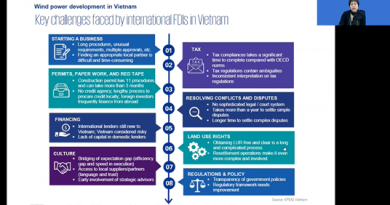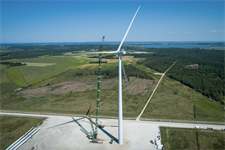New report: Wind and solar remain the country’s most affordable sources of new electricity
Energy Disrupter

For energy wonks, Lazard’s Levelized Cost of Energy Analysis 14.0 is always one of the year’s most anticipated reports. It’s the gold-standard when comparing the cost of different power generation technologies on an objective, equitable basis. No surprise, Lazard finds that wind and solar continue to be the lowest-cost sources of new power generation across the country and are increasingly competitive with existing power plants.
Lazard’s approach is simple enough. The firm models a representative power plant for each technology and solves for the dollars per megawatt-hour (MWh) power generation required to cover all power costs and provide returns to investors. Said another way, this solves for the amount a power plant owner would need to earn, on average, for each MWh of energy it produces over the course of its life to payback all costs and provide investors with a return on the capital they invested. This approach provides an apples-to-apples comparison of technology costs.
Wind and solar are clearly the low-cost power generation options available throughout the country. Depending on where the project is built, wind farms range in price from $26/MWh to $54/MWh, making it the lowest-cost source of electricity in many parts of the U.S. Since 2009, land-based wind power costs have declined 70 percent and have recently fallen at a rate of 5 percent per year.

Utility-scale solar is in similar territory, as material cost declines, performance improvements, and scale have driven a 90 percent reduction in solar costs since 2009. Today, utility-scale solar costs range from $31-$42/MWh. And cost declines continue, with costs falling 11 percent on average over the past five years.

Overall, land-based wind and utility-scale solar remain the lowest-cost sources of new electricity generation across the country, even accounting for incentives. The figure below captures a comparison across a variety of power generation technologies. With tax incentives included, the economics of wind and solar improve even further. Looking ahead, offshore wind is also increasingly cost-competitive, an encouraging sign given the proactive steps East coast states have taken to obtain more power from offshore wind projects.

Lazard also finds that the cost of building a new wind or solar plant is often more economic than continuing to purchase power from an existing coal- or natural gas-fired power plant. This means renewables make economic sense not only to meet new electricity demand but also to replace aging or uneconomic power plants.

The levelized cost of energy is certainly not the only consideration when determining which new resources to add to the grid, but it is a critically important one. The cost of providing other grid services should also be taken into consideration. Recent advancements in wind and solar technologies make these power plants increasingly capable of providing these services, while adding storage can augment these services further. Regardless, the cost of renewables continues to fall, making wind and solar a prime choice to generate electricity while providing a proven rate of return to investors.
Original Source: https://www.aweablog.org/new-report-wind-and-solar-remain-the-countrys-most-affordable-sources-of-new-electricity/
















